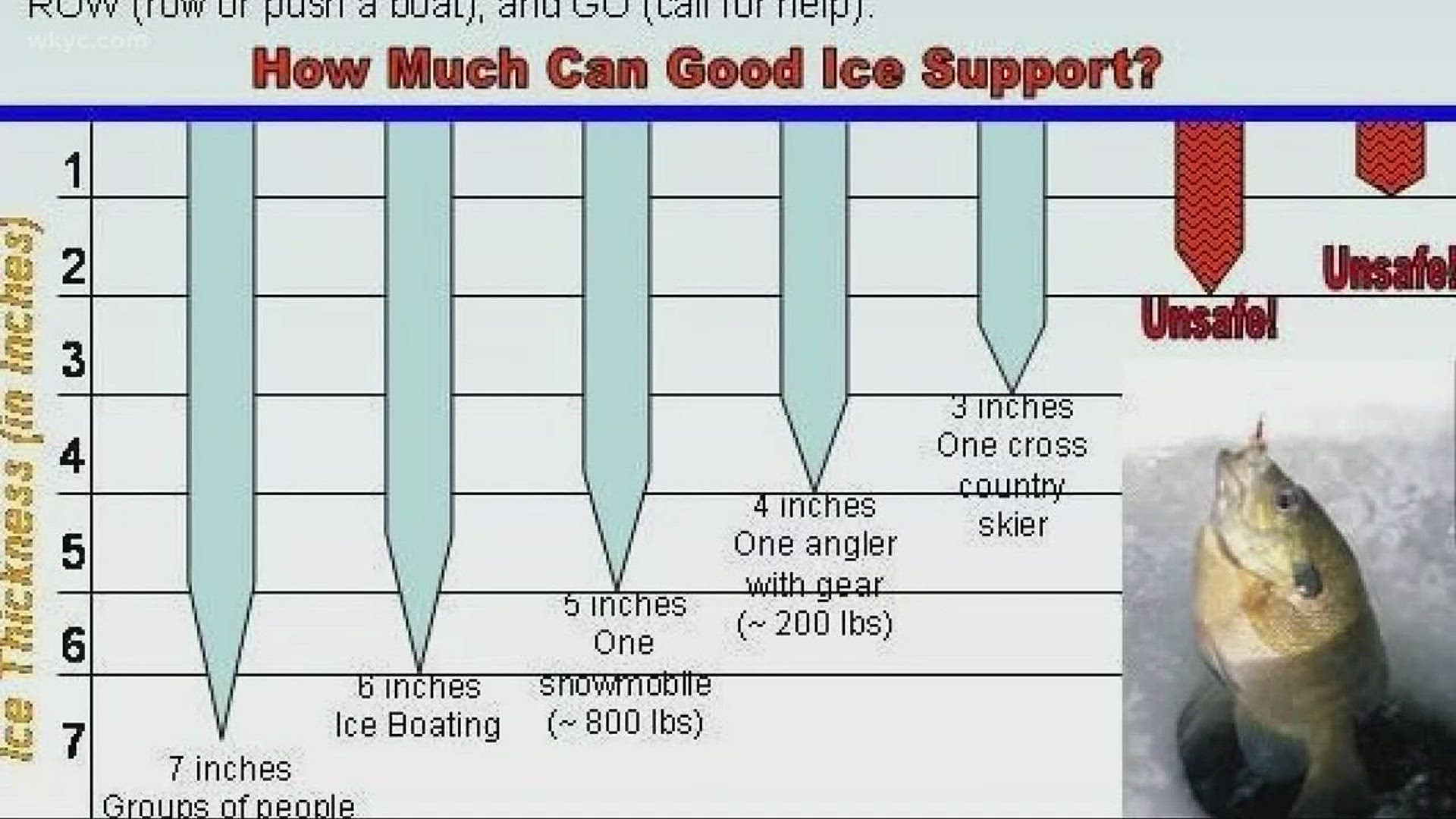Some say Mother Nature has blessed Ohio with mild winters the last few years.
Others say it's a curse.
Those of us who enjoy the cold weather months have been hoping for a good, cold winter. This week's Arctic plunge has people getting ice fever. And that is very dangerous.
Richard Huggins is with the New Franklin Fire Department in Summit County. He's a member of their water rescue team. They handle ice rescues around the Portage Lakes in the winter.
"We get a few calls every year, mostly snowmobile accidents, some kids, and sometimes even dog rescues," Huggins says. "This is the most dangerous time of year because seeing the lakes ice covered gives you a false sense that it's thick."
Footprints in the snow at Old State Park show people have been checking the ice. I walked out about ten feet from shore and the ice held, but my boot prints filled up with water. That's a sign the ice is unsafe and dangerous and I immediately got back on shore. Here are some places to avoid on early ice:
- Anywhere flowing water comes into a body of water. Ice erodes from the bottom and you won't be able to tell thickness from looking at the top.
- Shorelines, docks, and tree falls all absorb heat during the day and ice will be thinner near these places
- Avoid going under bridges or walking on channels where the lakes narrow. Currents will increase in those areas and ice forms slower there
-Look out for standing water on top of ice. Pressure cracks will allow water to come to the op and add huge amounts of weight to the ice.
- Ice that is layered, gray, full of bubbles is not "good" ice. The best ice is clear ice. THERE IS NO SUCH THING AS SAFE ICE!
If you plan on checking the ice on your local pond, do not go alone. Take your safety gear as well.
- Wear your PFD (life jacket). It will add a layer of insulation and if you do go in, it will keep you floating.
- Get a set of ice picks. They are two ice picks you wear around your neck, connected by a piece of rope. If you go in, you can use them to get traction on the ice enough to pull yourself out.
-Take your cell phone and put it in a Ziploc baggie. This will keep it dry and you'll be able to call for help.
- Use a "spud bar" or ice auger to feel your way out or drill test holes every ten feet or so.
- Use common sense. If there's no one on the ice, don't go out. No fish or snowmobile ride is worth losing your life over.
For more ice safety tips, check out www.wildohio.com and search "ICE FISHING".
WATCH: Check out more tips on ice safety with Carl Bachtel in his WKYC Facebook Live feature:

